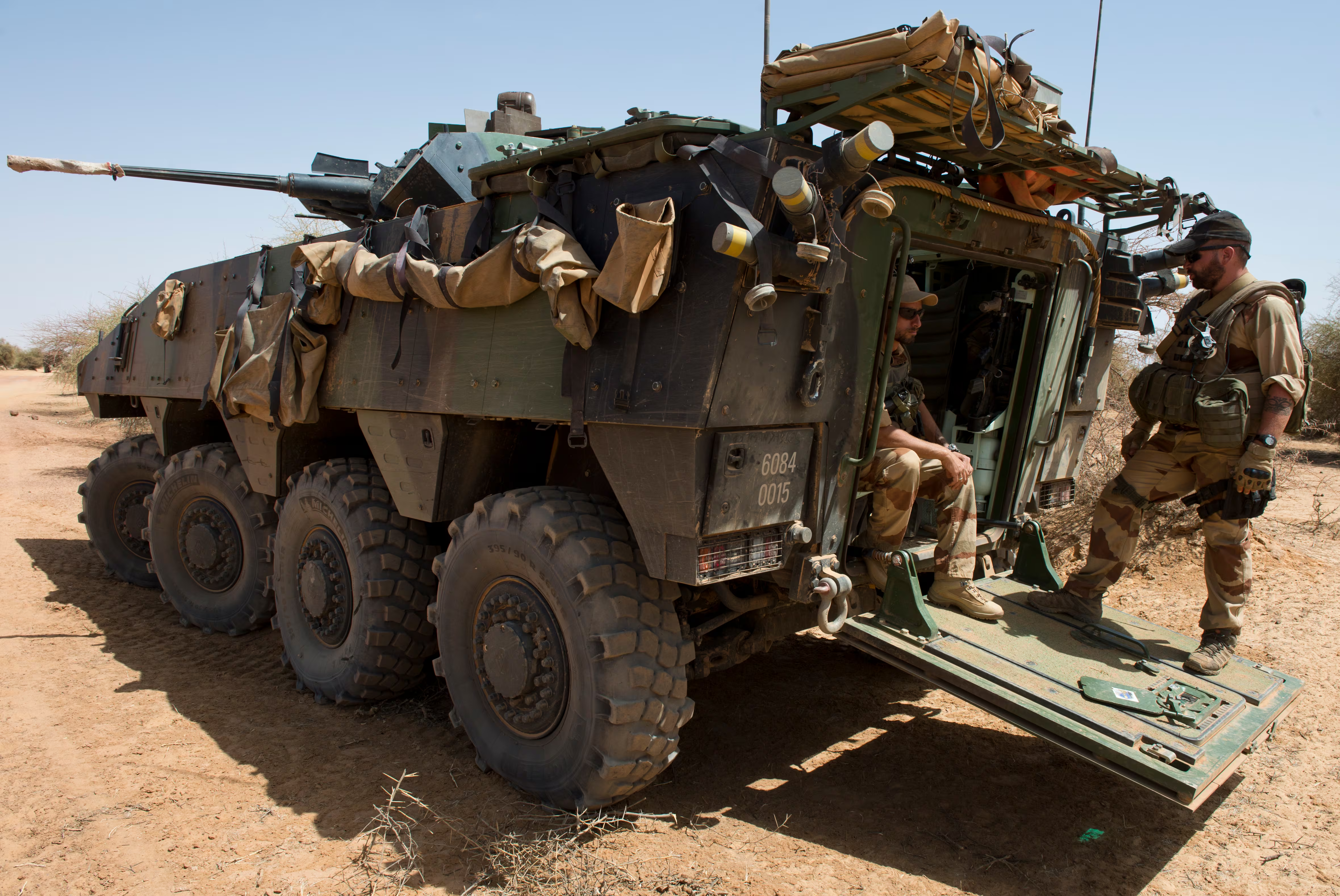LONDON — French land systems company Nexter unveiled Sept. 15 an upgraded 32-ton version of the eight-wheel-drive vehicule blinde de combat et infanterie Mk2 (VBCI Mk2) aimed at export markets, seen as vital for avoiding a production gap on the production line.
Nexter has invested tens of millions of euros of company funds in developing the export version, which was pitched in competitions held by Canada and Denmark, said Mike Duckworth, director for international affairs. The company has presented the VBCI in a tender held by Qatar, which reportedly is has been reported to be looking to acquire between 200 and 600 units.
The British Army put a Nexter VBCI through trials from October 2014 to May 2015.
Among the improvements are a new Volvo D13 engine designed for commercial vehicles, generating 600 brake horsepower compared to 350 BHP on the previous D12 powerplant. There is more headroom, greater headroom, improved air conditioning, new shock seats built to protect troops from mines and a Nexter onboard communications network designed for plugging in the Sagem Felin infantry sensor system.
The improved air conditioning reflects the French Army's operations of the VBCI in the Mali campaign, where the temperature rose to 55 degrees Celsius every day.
French labor union CFDT said in its August newsletter there is concern about the workload for the armored vehicles, as there is little work in prospect after production of the Caesar canon, and x retrofit of the upgrade of the VBCI to 32 tons and modernization of the Leclerc tank for the French Army. Export wins are seen as needed to plug the production gap until work builds up for the multirole Griffon and Jaguar combat vehicles in the French Army's Scorpion modernization program.
Canada canceled its tender, while Denmark picked the Piranha 5 from General Dynamics European Land Systems' Mowag unit.
Email: ptran@defensenews.com







